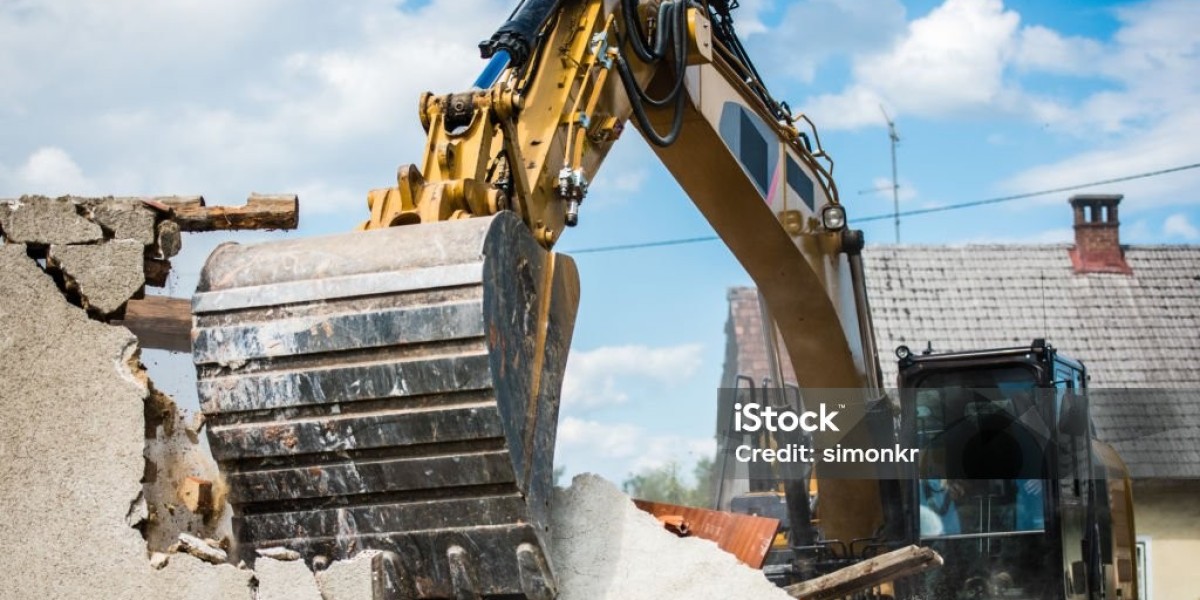House demolition is the process of tearing down a residential building either partially or entirely. It may sound straightforward—bring in heavy equipment and knock the house down—but in reality, it's a complex task that involves planning, permits, environmental considerations, and skilled labor. Whether you're making way for a new home, dealing with a structurally unsafe building, or clearing land for a different use, understanding the House demolition process is crucial.
Why Is House Demolition Necessary?
There are many reasons homeowners and developers choose to demolish a house:
Structural Issues: If a house is damaged beyond repair due to age, natural disasters, or foundational problems, demolition may be the safest and most cost-effective option.
Redevelopment: In areas with rising property values, land may be more valuable than the structure on it. Demolition makes way for new construction.
Modernization: Some old houses may not meet modern building codes or design preferences. Demolishing and rebuilding allows for customization and updated features.
Health and Safety Hazards: Mold, asbestos, lead paint, or pest infestations may render a house unsafe for habitation.
Partial Renovation: Sometimes only part of a structure needs removal—such as a garage, extension, or interior walls—to make way for remodeling.
Types of House Demolition
Demolition methods vary depending on the structure and project goals:
1. Mechanical Demolition
The most common method, mechanical demolition uses heavy machinery like excavators, bulldozers, and wrecking balls to tear down the structure. It's fast, efficient, and suitable for most standard houses.
2. Deconstruction (Manual Demolition)
Also known as "green demolition," deconstruction involves carefully dismantling the house piece by piece to salvage materials like wood, bricks, fixtures, and appliances. This process is more time-consuming but environmentally friendly and can provide tax benefits for donated materials.
3. Selective Demolition
This method targets specific parts of a structure, such as removing only interior walls, roofs, or extensions. It's often used during renovations.
4. Implosion
Rarely used for houses, implosion involves placing explosives in a strategic manner to collapse a building inward. It's reserved for large or complex structures.
Steps Involved in House Demolition
1. Inspection and Planning
Before demolition, a thorough inspection is necessary to check for hazardous materials like asbestos or lead paint. An engineered plan is also created to guide the process safely and efficiently.
2. Permits and Documentation
Local authorities typically require a demolition permit. You may also need approval from zoning boards or neighborhood associations. Utilities must be disconnected and capped off to prevent accidents.
3. Hazardous Material Removal
Licensed professionals are required to safely remove and dispose of hazardous materials. This step is crucial for compliance and safety.
4. Site Preparation
This includes fencing off the property, posting warning signs, and removing any salvageable items or landscaping features.
5. Demolition
Using the chosen method, the structure is demolished. In mechanical demolition, machinery reduces the house to rubble. In deconstruction, workers manually dismantle components.
6. Debris Removal and Site Cleanup
All debris is hauled away to landfills or recycling centers. Some materials, such as concrete or metal, may be reused.
7. Site Grading and Preparation for Future Use
Once cleared, the land is graded and leveled. If you're building a new home, the site is prepped for construction.
Legal and Environmental Considerations
Before any demolition begins, it’s essential to:
Obtain permits from your city or county.
Follow EPA guidelines for hazardous materials.
Coordinate with utility companies to disconnect water, gas, and electricity.
Notify neighbors as a courtesy and to avoid disputes.
Hire licensed contractors experienced in demolition and waste management.
Salvage and Recycling Opportunities
Modern demolition emphasizes sustainability. Many items can be salvaged or recycled:
Wood and lumber
Bricks and concrete
Copper piping and wiring
Windows and doors
Appliances and fixtures
Deconstruction or selective demolition methods allow for higher recovery rates of valuable materials.
Choosing a Demolition Contractor
A licensed and insured demolition contractor will ensure that your project proceeds safely and in compliance with all regulations. When selecting a contractor:
Ask for references and previous project examples.
Ensure they handle permits and hazardous material removal.
Get a detailed estimate and timeline.
Check for proper insurance coverage.
House Demolition FAQs
How long does house demolition take?
Mechanical demolition can take 1–3 days, while deconstruction may take 1–2 weeks or more.
Do I need to be present during demolition?
No, but it’s important to be reachable in case decisions or emergencies arise.
Can I demolish a house myself?
DIY demolition is generally not recommended due to safety and legal complexities. Always consult local regulations and professionals.
Is it cheaper to demolish or renovate?
It depends on the condition of the house. Major structural or environmental issues often make demolition more cost-effective in the long run.
Conclusion
House demolition is more than just knocking down walls—it’s a strategic process that requires careful planning, regulatory compliance, and environmental consideration. Whether you're clearing space for a new build or removing a hazardous structure, understanding the types, costs, and steps involved ensures your project is safe, legal, and efficient.








